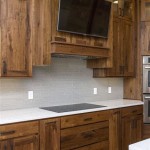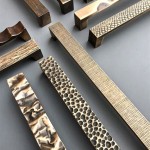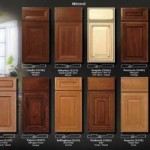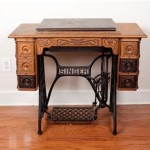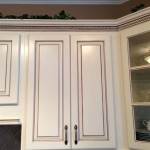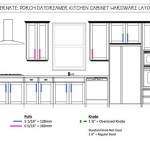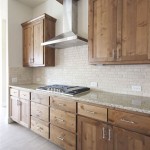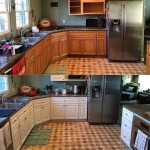Where Should I Put Handles On My Kitchen Cabinets?
Cabinet hardware is the jewelry of the kitchen, adding both functionality and style. Choosing the right hardware and placement can drastically impact the overall aesthetic and usability of the kitchen. Careful consideration of ergonomics, cabinet style, and personal preference are key to achieving the desired result.
Ergonomics and Functionality
Handle placement plays a significant role in how easily cabinets can be opened and closed. Positioning handles for optimal leverage and comfortable reach is essential, especially for frequently used cabinets. For base cabinets, handles are typically placed vertically on the upper corner opposite the hinge or horizontally centered on the rail. The vertical placement offers better leverage for pulling open heavier drawers and doors, while the horizontal placement provides a more modern aesthetic. Upper cabinets benefit from handles placed on the bottom corner opposite the hinge for easy reach and reduced strain. Positioning handles too high or too low can make access difficult, particularly for individuals of varying heights.
Consider the contents of the cabinet when deciding on handle placement. For cabinets housing heavy items like pots and pans, handles positioned for maximum leverage are preferable. For lighter items, aesthetic considerations may take precedence. Drawers generally have handles centered horizontally on the front. For deeper drawers, two pulls may be necessary for easier opening and to prevent racking or warping over time.
Aesthetic Considerations and Cabinet Style
The style of the kitchen cabinets heavily influences handle placement. Shaker-style cabinets, with their clean lines and simple design, often benefit from simple, unfussy handles placed in traditional locations. More ornate or traditional cabinet styles might complement elaborate pulls and knobs placed to highlight the decorative elements. Modern or minimalist kitchens often feature sleek, integrated handles or recessed pulls for a seamless look.
Vertical placement tends to emphasize the vertical lines of the cabinetry, contributing to a more traditional or classic feel. Horizontal placement can create a more contemporary or modern look, drawing attention to the horizontal lines of the cabinets. The size and scale of the handles should be proportionate to the size of the cabinets. Large, oversized handles can overwhelm smaller cabinets, while small handles can get lost on larger doors.
Consistency in handle placement throughout the kitchen creates a sense of visual harmony. However, varying the placement on different cabinet types, such as upper versus lower cabinets, can add visual interest while maintaining a cohesive design. Integrating appliance pulls that complement the cabinet hardware can further unify the kitchen's aesthetic.
Personal Preferences and Practicality
While general guidelines exist, personal preferences ultimately dictate the ideal handle placement. Consider the primary users of the kitchen and their individual needs and preferences. For households with children or individuals with limited mobility, handle placement should prioritize ease of access and safety. Avoid sharp edges and consider rounded or softer profiles for handles.
Testing different handle placements before drilling holes is highly recommended. Use painter's tape or cardboard cutouts to simulate handle placement and assess the feel and functionality. This allows for adjustments and ensures optimal comfort and usability before making permanent changes. Consider the overall flow and function of the kitchen when deciding on handle placement. Ensure that handles do not interfere with the opening and closing of adjacent cabinets or drawers.
The finish and material of the hardware should also be considered in conjunction with placement. Darker finishes can create a striking contrast against lighter cabinets, while lighter finishes can blend seamlessly for a more understated look. Materials such as brushed nickel, stainless steel, and oil-rubbed bronze offer varying levels of durability and maintenance requirements. Choosing hardware that complements the overall design aesthetic of the kitchen is essential for creating a cohesive and visually appealing space.
Mixing and Matching Hardware
Mixing and matching hardware can add a unique touch to the kitchen. For example, using knobs on upper cabinets and pulls on lower cabinets can create visual interest and differentiate between the two. However, maintaining a consistent finish and style throughout the kitchen is crucial to avoid a cluttered or disjointed look. Consider the architectural style of the home and the desired aesthetic when deciding whether to mix and match hardware.
When mixing hardware styles, aim for a sense of balance and cohesion. Choose hardware that complements each other in terms of size, shape, and finish. For example, pairing simple knobs with more ornate pulls can create a balanced and visually appealing look. Avoid mixing too many different styles or finishes, as this can create a chaotic and overwhelming effect.

How To Install Cabinet Handles Ultimate Stress Free Tips

Kitchen Cabinet Handle Placement Dos And Don Ts Living Letter Home

Cabinet Hardware Placement Guide

How To Install Cabinet Handles Ultimate Stress Free Tips

Cabinet Hardware Placement Guide

Learn How To Place Kitchen Cabinet Knobs And Pulls Cliqstudios

Comprehensive Guide To Cabinet Hardware Size Placement Handles More

Cabinet Hardware Placement Guide For Shaker Cabinets

Where To Put Your Kitchen Handles Houzz

Cabinet Hardware Placement Guide For Shaker Cabinets
Related Posts

